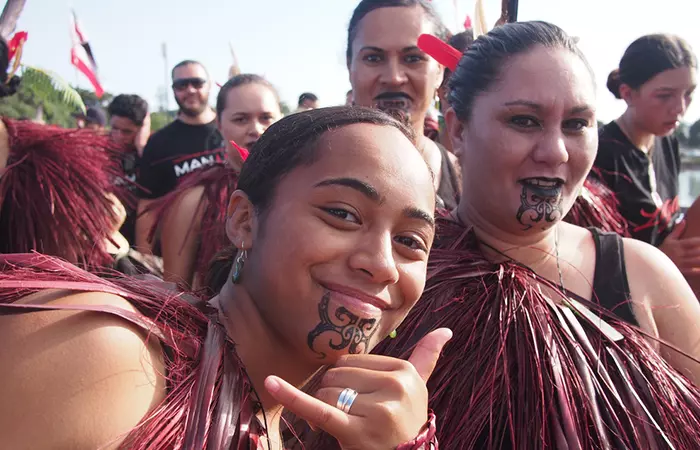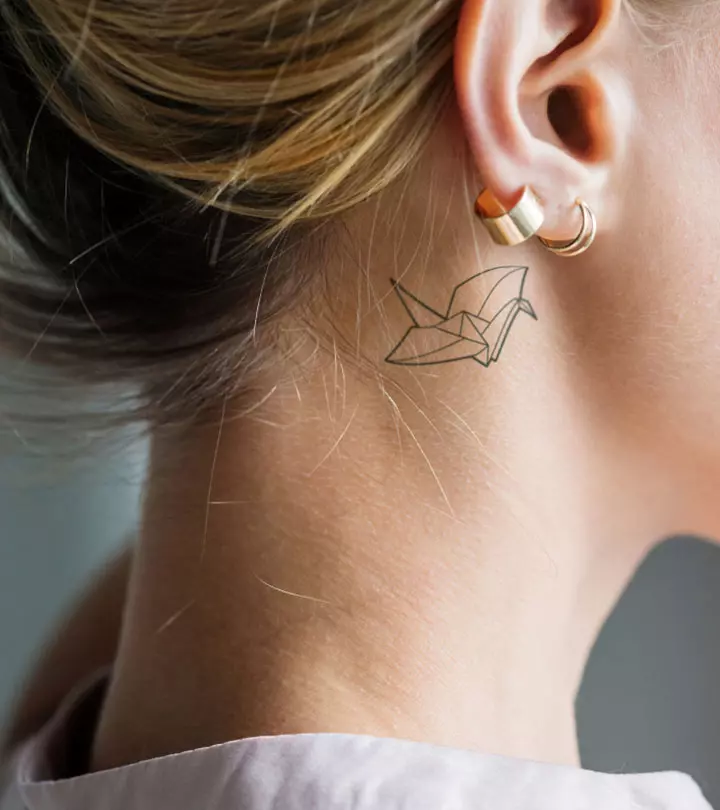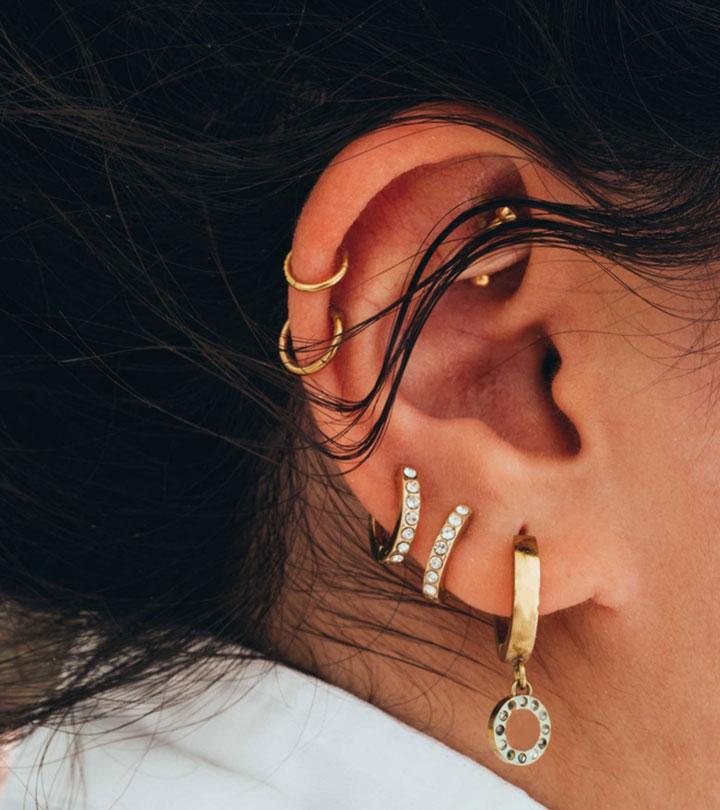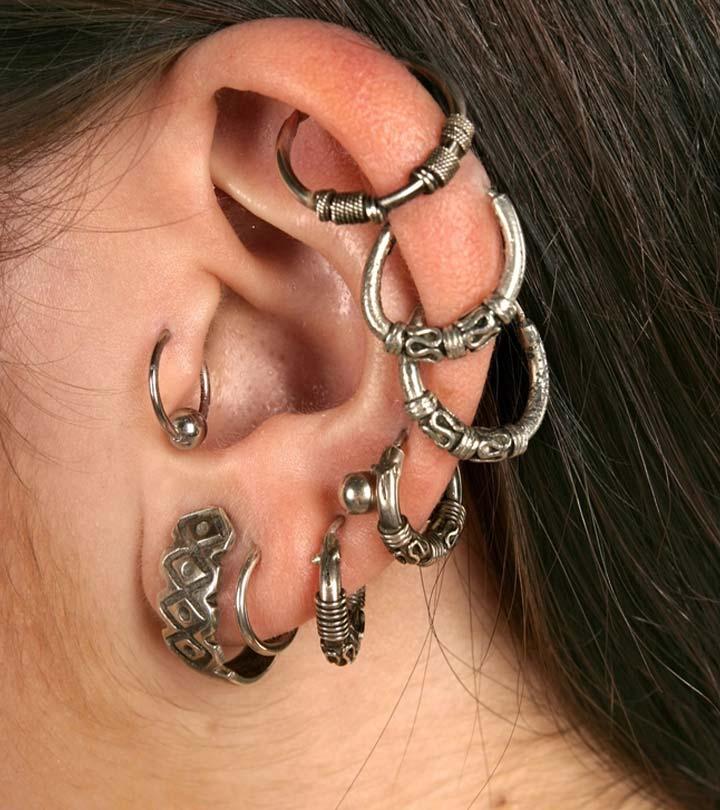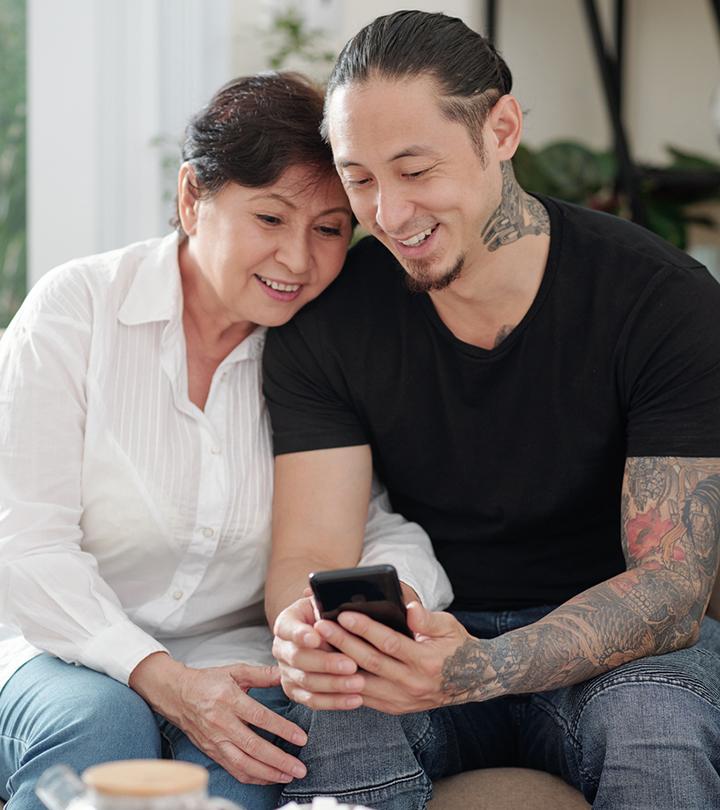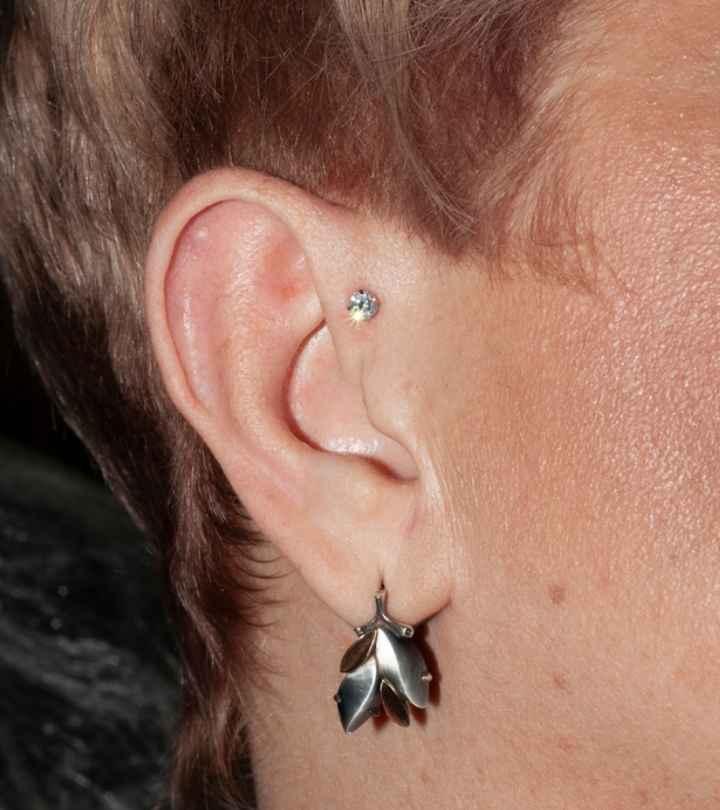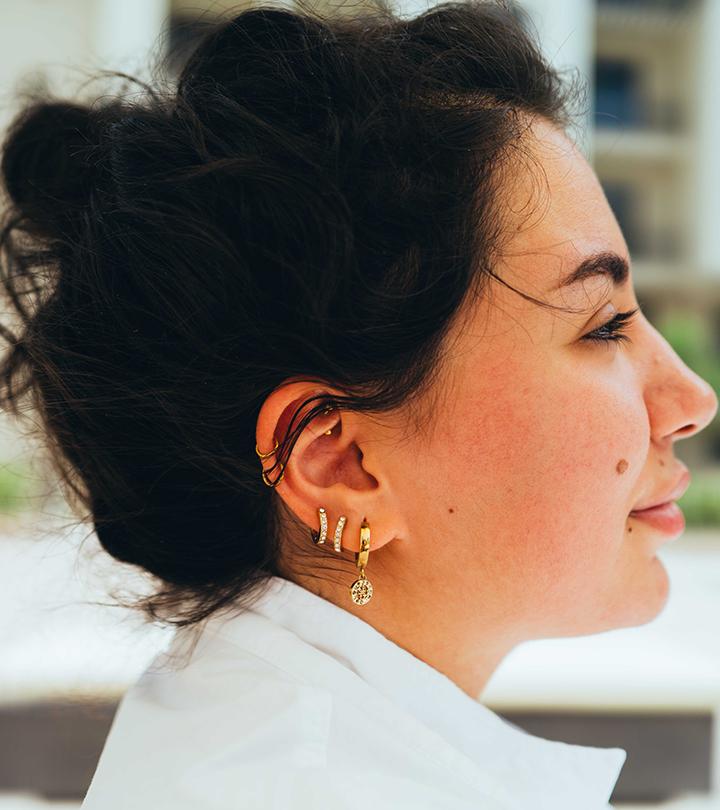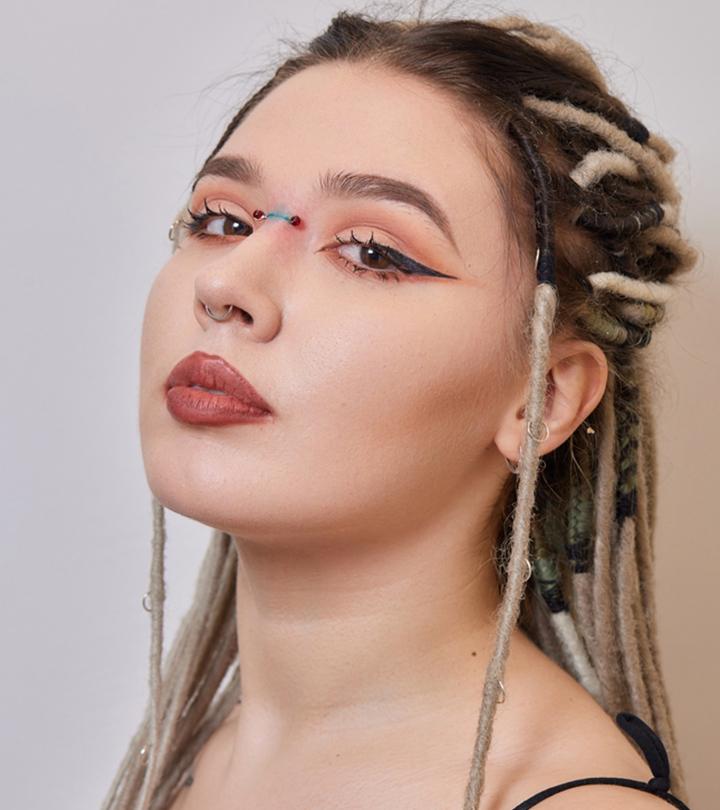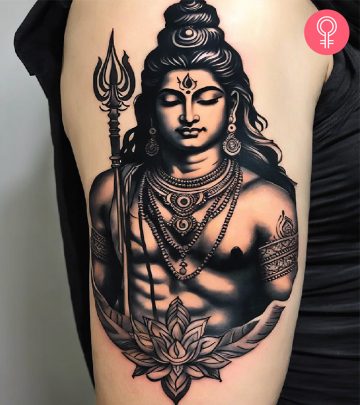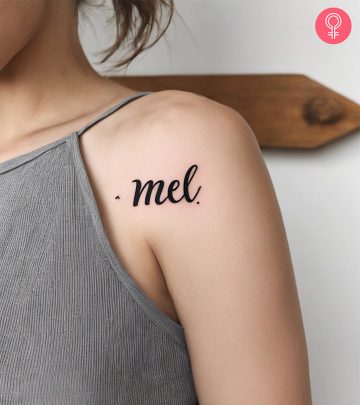History Of Tattoos: Their Origin & Who Invented Them
Discover more about the cool beginnings of this ancient practice of body art.

Image: Shutterstock
Body art may seem like a new-age trend with its popularity only growing but its origins are far from recent. The history of tattoos can be traced several centuries back and across various cultures.
Today, getting tattoos is very convenient. The tattoo industry is booming with talented artists who offer a range of tattoo designs. However, it was a strict and revered tradition only a couple of millennia ago. In many cultures, tattoos were perceived to be amulets with mysterious magical properties that could be the salvation of a soul!
While the practice of special ethnic tattoos is still prevalent in many indigenous cultures, it has also caught up with the general population. The symbolism may be sacred, but it need not necessarily be. Join us as we traverse the history of tattooing in this insightful article.
In This Article
The History Of Tattoos
Documented evidence of tattoos dates back to multiple ancient cultures across the world. From indigenous Polynesian cultures, Native Americans, Greeks, and Nubians (a tribe native to Central Nile valley) ancient Siberian nomads, many populations have a rich history of tattoos. Tattoos were meant as religious symbols, status markers, protective charms to ward off evil, aesthetic adornments, and even punishment across various cultures. Their pigments are reported to have been made of ashes or soot mixed with plant extracts, oil, water, or pig bile. The tools were made with materials like bone, teeth, oyster and turtle shells, fishbone, citrus thorns, and so on.
The Greek writer Herodotus’ records from around 450 BC mentioned tattoos were a symbol of nobility among the Thracians and Scythians. However, a tattoo was seen as a mark of belonging to someone or something in Greek cultures. For instance, it may be a mark signifying that an individual belongs to a religion or is a slave belonging to a nobleman. In certain cases, they were also made to mark criminals. Further, the Macedonian Greek pharaoh in Egypt, Ptolemy IV (221-205 BC) was said to have a tattoo featuring ivy leaves to represent his devotion towards the Greek God of wine, Dionysus, who was also the patron God of the royal house back then.
These tattoo practices were also adopted by Roman empires until the emergence of religions like Christianity and Judaism. Extremely conservative believers perceived the practice to disfigure the sacred body, which was made in God’s image. This led the Roman emperor, Constantine (306-337 AD) to ban the practice.
From here on, the art of tattooing evolved to signify distinct social rankings. While they were revered by indigenous cultures, they were frowned upon by those of higher social status in cultures that believed themselves to be more civilized than other cultures. For instance, Christian missionaries during the 1800s widely discouraged indigenous people from getting tattooed, which was an integral part of multiple traditional celebrations within their cultures.
In the West, tattoos were first used by American soldiers in the early 19th century to escape forceful service in British Naval vessels. However, by the late 1800s, American sailors inked meaningful little symbols and elements as a form of self-expression while they were away from home.
Tattoos became popular among the general masses, when in 1891 Samuel F. O’Reilly patented the first electric tattoo machine based on Thomas Edison’s autographic printing pen. This resulted in the process becoming faster, making it accessible to more people. However, many religious sections still saw tattoos as evil omens.
Until the second half of the 20th century, tattoos continued to be considered taboo in society. However, with the colonial era declining, the liberated masses began using tattoos to reclaim their identities.
Modern tattoos are breaking through deep-rooted social stigmas and making their way into the everyday lives of people now. There continue to be sections of people who still look down on it, but the tide is changing for the good.
 Trivia
Trivia
Tattoos are one of the most popular art forms today and have a colorful and grim history, but when did it all start? Find out in the next section.
The Origins Of Tattoos
In ancient communities, tattoos were used as identity markers to signify the relationship of humans with their social environment, nature, or spiritual beliefs. The actual period of the origins of tattoos largely remains unknown. However, there is written documentation of tattoo practices from the 5th century BC, Greece and archaeological evidence of tattoos on mummified skins of remains from older civilizations.
Tattooed Egyptian female mummies dating back to 2000 BC were considered the earliest evidence of ancient tattooing practices. They were also known to have the first figural tattoos (tattoos depicted images from reality). One interesting fact was that tattooing was noted to be more common in female Egyptian mummies, with just one male mummy found to have a tattoo.
Many male excavators initially dismissed the value of these tattooed mummies as they believed them to be of lower social status or prostitutes. However, when such mummies were found in royal burials, they were labeled as royal concubines. Funerary inscriptions have revealed there were high-status priestesses among the tattooed female mummies, cementing the fact that it was a practice restricted to women. Further studies suggest that the tattoos found on the abdomen, breast, and top of the thighs were used as amulets to protect women during pregnancy and childbirth. The dotted pattern of these tattoos also resembled beaded nets placed over mummies to preserve the bodies and keep everything wrapped in nicely.
A Chinchorro mummy (mummified remains of expert fishermen from the South American Chinchorro culture) discovered in 1983 was believed to be the oldest tattooed human who lived circa 4000 BC until Ötzi came along. In 1991, the discovery of Ötzi, the iceman in the Tolyrean Alps called for a re-assessment of the Chinchorro mummy’s age and it was discovered to be from a much later period. Ötzi was carbon-dated to be 5200 years old, pushing the record to 3400-3100 BC. Currently, he is the oldest mummified human on record with over 61 tattoos throughout his body comprising 19 groups of thick lines that range from 1-3 mm in thickness and 7-40 mm in length. It is reported that the tattoos are so elaborate that Ötzi could not have been the first and the practice predates him as well.
 Trivia
Trivia
So, the question of who invented tattoos or when did humans first begin getting tattoos remains a mystery. Despite the ages between us and ancient humans, we seem to share similar dreams, hopes, and beliefs. That said, would it not be interesting to see how tattoos came about in different cultures in the past? Find out in the next section.
Tattoos In The Past And Across Different Cultures
Here are a few known cultures with distinct tattoo practices.
American Culture
Jesuit missionary explorers from 1652 have recorded tattoo practice among the Petun and Neutral tribes. They wrote, “But those who paint themselves permanently do so with extreme pain, using, for this purpose, needles, sharp awls, or piercing thorns, with which they perforate, or have others perforate, the skin. Thus they form on the face, the neck, the breast, or some other part of the body, some animal or monster, for instance, an Eagle, a Serpent, a Dragon, or any other figure which they prefer; and then, tracing over the fresh and bloody design some powdered charcoal, or other black coloring matter, which becomes mixed with the blood and penetrates within these perforations, they imprint indelibly upon the living skin the designed figures.” The practice has been recorded by other explorers to be prevalent in other indigenous communities in North America as well.
Inuit Culture
The Inuit people, an arctic indigenous tribe, have a rich culture of tattoos. In the Inuktitut language, the term ‘kakiniit’ means tattoo, and ‘tunniit’ means facial tattoos. The tradition of facial tattooing among women symbolized their transition from girlhood to womanhood. It was done during the start of their first menstrual cycle and symbolized beauty, maturity, and strength. It is a sacred practice built on the belief that a woman without tattoos on her body cannot transition to the spirit realm after death.
Osage Culture
The Osage people, a midwestern American tribal population, are known to use tattoos for various purposes. Most of their body art themes ranged from relationships with all universal beings to women giving birth. In ancient times, Osage men got themselves tattooed after victory in battles as a sign of elevated ranks, while some women were tattooed publicly as devotional practice in a display of strength and national dedication.
Haudenosaunee Confederation
These northeast North American native people also used tattoos in connection to war. Young boys were sent on a journey of self-discovery into the wilderness as part of their initiation into their armies. On this journey, they were meant to find their personal Manitou; a spirit guide and then get their respective Manitous tattooed on their bodies. Then, as they won wars, they would get more tattoos. Some of these warriors had facial tattoos that represented the number of enemies they had scalped as a trophy during wars.
Yue People
In ancient China, tattooing was considered a barbaric practice. It was especially linked to the Yue people, a group consisting of multiple tribes from Southern China. Tattoos were popularly known to depict folk heroes and bandits in literature. Up until the Qing dynasty, tattooing was majorly done to identify criminals or slaves.
Ancient Japan
The practice of tattooing in Japan goes back to the Paleolithic or Old Stone Age for spiritual and ornamental purposes. From the 17th to 19th century, the urban subculture in Japan used tattoos to represent one’s social status. Around the same time, tattoos were also used to mark criminals as punishment. The Meiji Government, formed in 1868, banned tattooing altogether when it was increasingly being associated with organized crime groups such as the Yakuza.
The Ainu indigenous people in Northern Japan also participate in tattooing as a spiritual practice associated with their deities, Kamuy. Typically, the tribe’s women begin getting tattoos around their mouths at a young age and continue to get more until they are married. Men may also get tattoos but mostly on the shoulder and arms.
Thai-Khmer
The Yantra tattoos among the indigenous people of Thailand and Cambodia were done for good luck and protection, which soon assimilated Hindi and Buddhist ideologies. Today, the Sak Yant is the traditional tattoo of the people done by Brahmin priests or Buddhist monks. These tattoos feature Hindu Gods and ancient Khmer script.
Austronesian Peoples
The vast population of Austronesian peoples comprises tribes from Taiwan, the Philippines, Malaysia, Indonesia, Polynesia, and Madagascar. The elaborate tattoos were meant to symbolize kinship, relationship with nature, and spiritual symbols. The tattoos typically start small and then are added on as part of regular traditional practices until the entire body is covered with the tattoos. Among these, Polynesian tattoos are probably the most popular today because of their bold and eye-catching patterns. A large factor may also be the inclusion of elements from Maori culture in contemporary entertainment and Polynesian art forms such as dance and music going viral on internet trends.
Copts
The Copts are a Christian ethnoreligious group from North Africa who typically tattoo a Coptic cross on the inside of their right arm. However, they may get the symbol tattooed anywhere else on the body to signify their relationship with their religion.
Typically, tattoos are known to be prevalent among indigenous cultures who have been able to preserve their cultural practices. There might still be several folk cultures out there whose distinct tattoo practices are not well-documented. What ties all these tattoos together is that they are meant to tell stories and are heavily influenced by life and nature. Any kind of tattoo one gets today is only a highly personal version of artistic practice.
So that was the fascinating human history of tattoos. This several millennia-old form of art has undergone a major transformation. From being a revered and sacred practice to becoming viral trends on the internet today, this art form has surely thrived and continues to be one of the most popular methods of self-expression. Learning about the history of tattoos can help us understand the people who came before us and how our species has shaped into what it is today.
Frequently Asked Questions
What was the original use of tattoos?
The exact original use of a tattoo is unknown as the oldest people to practice tattooing are yet to be discovered. However, a general understanding of the uses of tattoos is that they were used as markers of identity, religious affiliation, social status, as well as punishment.
What was the oldest method of tattooing?
The earliest known method of tattooing was to pierce the skin using sharp objects and then rub charcoal or other pigmented material into the wound. So, when it heals, the pierced patch of skin is colored. These sharp objects were usually natural resources such as old bones, teeth, fishbones, and so on.
Key Takeaways
- The oldest preserved evidence of a tattooed person is Otzi the Iceman, who is carbon-dated to be over 5200 years old.
- The first figural tattoos were found on the mummified bodies of Ancient Egyptian women.
- Historically, tattoos were done to symbolize one’s social status, religious or spiritual beliefs, protective charms, or signs of slavery or punishment.
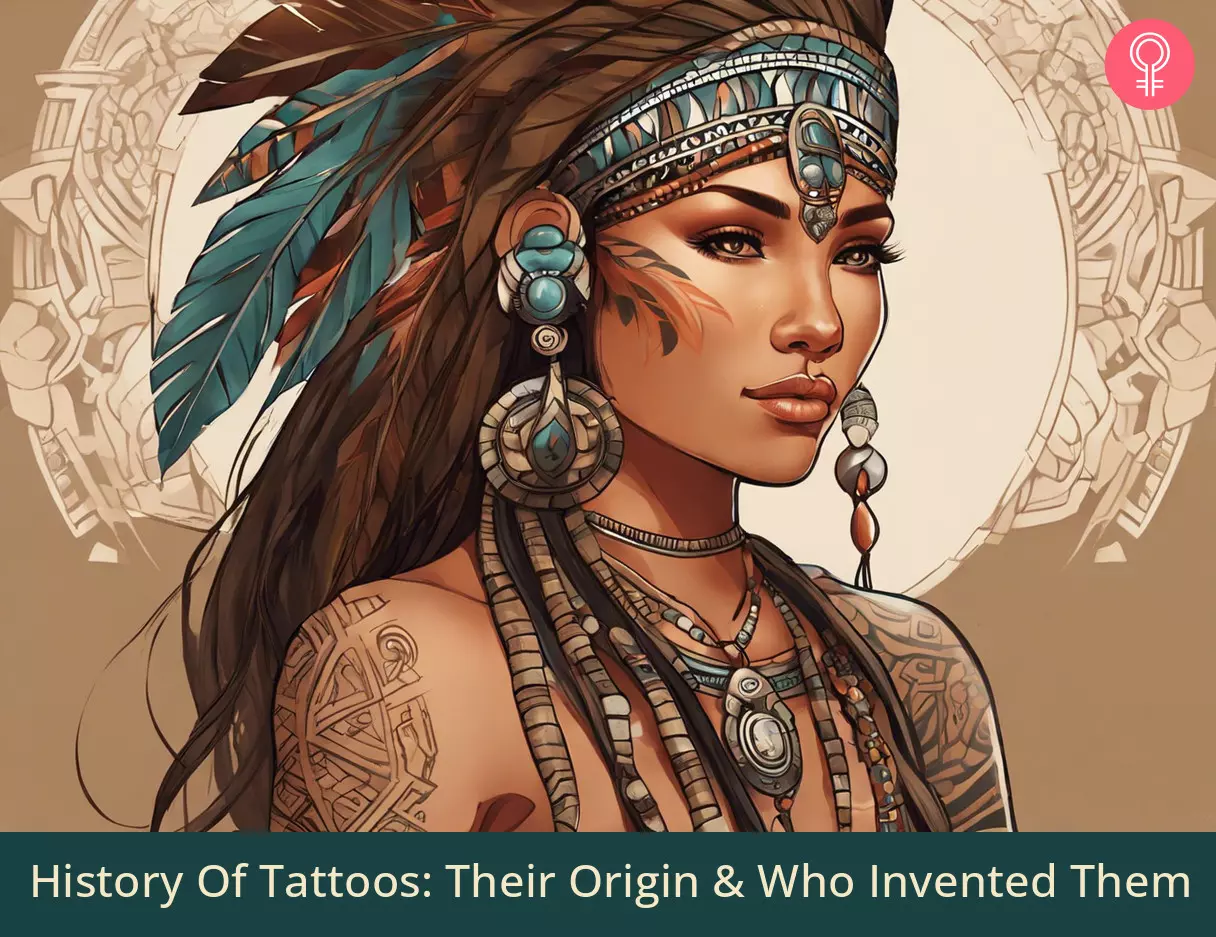
Image: Stable Diffusion/StyleCraze Design Team
The history of tattoos dates back several centuries. But, interestingly, the reason behind getting inked remains more or less the same. Check out this video for the different tattoo symbolisms shared across time and space.




